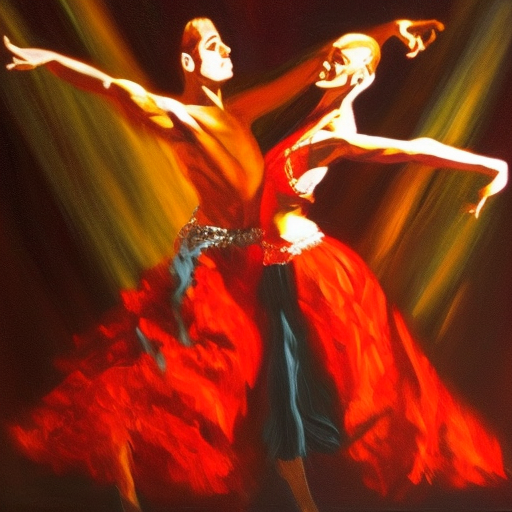Salsa: A Vibrant Dance and Music Genre
Salsa is a lively and energetic dance and music genre that originated in the Caribbean, particularly in Cuba and Puerto Rico, during the late 19th and early 20th centuries. It is a fusion of various musical styles, including Afro-Cuban son, mambo, cha-cha-cha, and jazz. Salsa has since spread across the globe, becoming popular in Latin American communities and gaining a significant following worldwide.
History and Origins
Salsa’s roots can be traced back to the African and European influences in the Caribbean. The African slaves brought their rhythmic music and dance traditions, which merged with the European instruments and musical structures. This fusion gave birth to Afro-Cuban music, which eventually evolved into the various styles that make up salsa today.
In the early 20th century, Cuban musicians began experimenting with new sounds and rhythms, blending traditional Cuban music with jazz elements. This led to the development of the mambo, a fast-paced dance music that became popular in the 1940s. The mambo’s infectious rhythms and syncopated beats laid the foundation for salsa.
Characteristics of Salsa Music
Salsa music is characterized by its lively and syncopated rhythms, complex percussion patterns, and rich harmonies. It typically features a combination of instruments such as the congas, bongos, timbales, piano, bass, and brass section. The clave, a two-bar rhythmic pattern, is an essential element in salsa music, providing the foundation for the dancers and musicians.
Salsa songs often have catchy melodies and lyrics that tell stories of love, passion, and social issues. The lyrics are usually sung in Spanish, although there are also salsa songs in English and other languages. The genre’s versatility allows for various interpretations and adaptations, making it accessible to a diverse audience.
Salsa Dance
Salsa dance is a partner dance that mirrors the lively and rhythmic nature of the music. It is characterized by intricate footwork, quick turns, and fluid body movements. The dance style varies depending on the region and influences, with Cuban, Puerto Rican, and New York styles being the most prominent.
Cuban salsa, also known as casino, emphasizes circular movements and incorporates Afro-Cuban dance elements. Puerto Rican salsa, on the other hand, is known for its flashy and acrobatic moves, often performed in a linear style. New York salsa, influenced by mambo and jazz, is characterized by its fast footwork and intricate partner work.
Salsa dance is a social activity that brings people together, fostering a sense of community and connection. It is often danced in clubs, social gatherings, and salsa festivals around the world. Salsa classes and workshops are also popular, allowing individuals to learn the dance and improve their skills.
Global Impact
Salsa’s popularity has transcended cultural boundaries and gained a global following. It has influenced and been influenced by other dance and music genres, such as Latin jazz, bachata, and merengue. Salsa festivals and congresses are held worldwide, attracting dancers and musicians from different countries.
The rise of salsa music and dance has also led to the emergence of salsa competitions and professional dance companies. Many dancers have dedicated their lives to mastering the art of salsa and have become renowned performers and instructors.
Salsa’s vibrant and infectious energy continues to captivate audiences and inspire new generations of dancers and musicians. Its enduring popularity is a testament to its ability to bring people together through the universal language of music and dance.
In conclusion, salsa is a dynamic dance and music genre that originated in the Caribbean and has since spread across the globe. Its roots in Afro-Cuban music and dance, combined with influences from jazz and other genres, have created a unique and captivating art form. Salsa’s lively rhythms, intricate footwork, and passionate expression make it a beloved and enduring cultural phenomenon.












